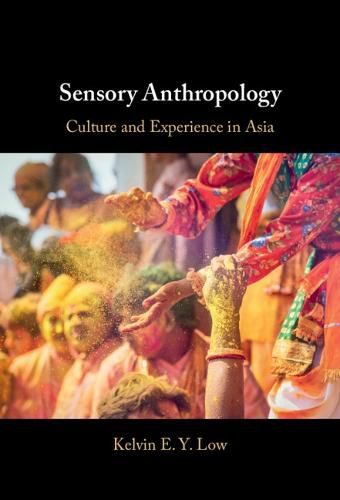Readings Newsletter
Become a Readings Member to make your shopping experience even easier.
Sign in or sign up for free!
You’re not far away from qualifying for FREE standard shipping within Australia
You’ve qualified for FREE standard shipping within Australia
The cart is loading…






From constructions of rasa (taste) in pre-colonial India and Indonesia, children and sensory discipline within the monastic orders of the Edo period of Japan, to sound expressives among the Semai in Peninsular Malaysia, the sensory soteriology of Tibetan Buddhism, and sensory warscapes of WWII, this book analyses how sensory cultures in Asia frame social order and disorder. Illustrated with a wide range of fascinating examples, it explores key anthropological themes, such as culture and language, food and foodways, morality, transnationalism and violence, and provides granular analyses on sensory relations, sensory pairings, and intersensoriality. By offering rich ethnographic perspectives on inter- and intra-regional sense relations, the book engages with a variety of sensory models, and moves beyond narrower sensory regimes bounded by group, nation or temporality. A pioneering exploration of the senses in and out of Asia, it is essential reading for academic researchers and students in social and cultural anthropology.
$9.00 standard shipping within Australia
FREE standard shipping within Australia for orders over $100.00
Express & International shipping calculated at checkout
From constructions of rasa (taste) in pre-colonial India and Indonesia, children and sensory discipline within the monastic orders of the Edo period of Japan, to sound expressives among the Semai in Peninsular Malaysia, the sensory soteriology of Tibetan Buddhism, and sensory warscapes of WWII, this book analyses how sensory cultures in Asia frame social order and disorder. Illustrated with a wide range of fascinating examples, it explores key anthropological themes, such as culture and language, food and foodways, morality, transnationalism and violence, and provides granular analyses on sensory relations, sensory pairings, and intersensoriality. By offering rich ethnographic perspectives on inter- and intra-regional sense relations, the book engages with a variety of sensory models, and moves beyond narrower sensory regimes bounded by group, nation or temporality. A pioneering exploration of the senses in and out of Asia, it is essential reading for academic researchers and students in social and cultural anthropology.